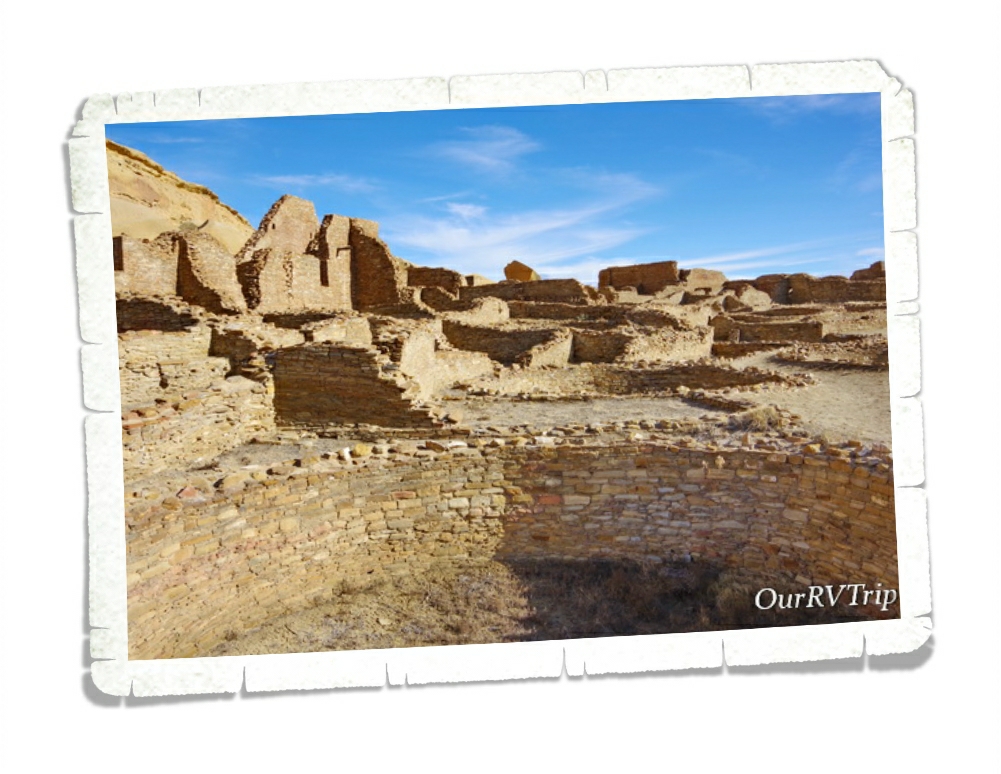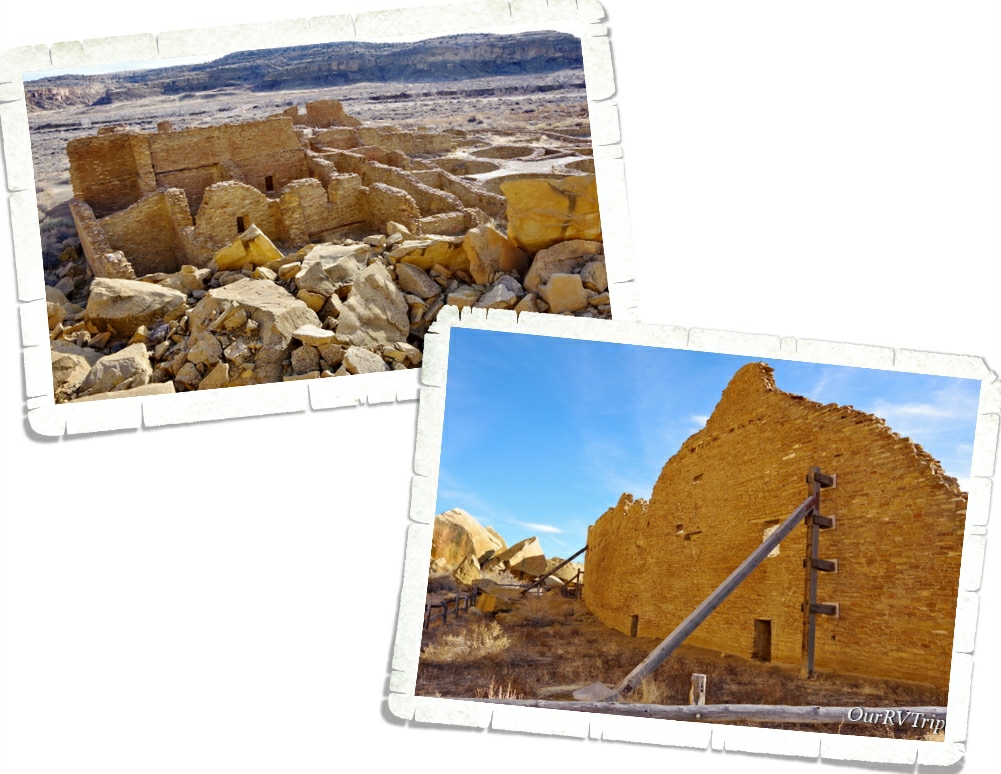
Chaco Culture National Historical Park
Hey Guys! We’re back in Farmington for one more post. This time we’re taking you to Chaco Culture National Historical Park. We found out about Chaco years ago. While we were visiting a different ancient dwelling, a Ranger saw how much we enjoyed the park and she dug out a map and started telling us about some of her favorite National Parks/Monuments. I think she was thrilled to have a family who was excited about learning to talk to and we were thrilled to have some insider knowledge about what parks we should put on our list.
Chaco Canyon is the largest excavated, best preserved ancient dwelling site in North America. This National Park sits in the middle of nowhere so don’t count on cell service…or really any kind of service. Make sure you’re geared up with plenty of snacks…possibly some lunch…water, and gas for your car. You’ll want to get there early because there’s so much to see…plan on spending an entire day here.
In the visitor center there’s a great little museum that has a cool little diorama that will give you a view of what Pueblo Bonito looks like from afar. It really gives you a better perspective of just how big a Chacoan Great House was.
Chaco Canyon is home to several great houses and hundreds of smaller sites spread out over the entirety of the canyon. Above you can see a few pictures of Hungo Pavi, an unexcavated Choacoan great house they believe had about one hundred and fifty rooms.
We spent the most time exploring Pueblo Bonito. This Chacoan great house was constructed in stages between 850 CE to 1250. At that time, Chaco was basically the center of the ancestral Puebloan people’s world. It was built at the geographical center of more than two hundred communities located outside of the canyon.
Chacoan builders often times oriented great houses with solar, lunar, and cardinal directions. The doors and windows pointed to specific directions. The inhabitants of the pueblos would use these guides as a type of calendar to know when to plant crops and hold specific ceremonies.
For three hundred years, generations of people worked on building Pueblo Bonito. Looking at the size and number of rooms, you’d think that the population of this pueblo was in the hundreds, but archaeologist think the permanent population was really only around 100 people. It’s thought that the residents Chaco Canyon numbered up to 6,000 people and the great houses were more of a center of trade, politics, and community business.
When the archaeologist started excavating, they found a sealed room containing 50,000 pieces of turquoise. That would have been amazing to see! Just to give you some perspective on that turquoise find…that’s more turquoise than what’s been found at all of the other archaeological sites in the American Southwest. In another room they found 4,000 pieces of jet and fourteen macaw skeletons. The fact that archaeologists found rooms full of items that would have been traded, leads them to believe that most of the rooms in Pueblo Bonito were used for storage.
In 1941, a huge rockfall destroyed around thirty rooms and damaged a portion of a main wall. Today, there’s only so much the NPS can legally do to help maintain and preserve sites like this. At one time, they could actually replace load bearing timbers and were able to put up these support beams. Now…it’s tricky. Rangers have to walk a fine line between to preserve as much as possible within the law.
There are quite a few petroglyphs in several places with the canyon. There’s an entire wall of them. We’ve seen petroglyphs at several different ancient dwellings and it’s always interesting to try and guess what they are or mean.
Archeologist have found proof of over 10,000 years of human occupation within Chaco Canyon. Pueblo del Arroyo was built between the years of 1065 CE and 1150. The most interesting thing we found about Pueblo del Arroyo was the triple wall kiva. A tri-wall kiva is rare in the Chaco region…in fact, only about a dozen or so have been found. Another big difference with this pueblo is that it faces east instead of south the way the other great houses are.
Casa Rinconada great kiva was constructed on the top of a hill surrounded by smaller villages. This great kiva is the largest found in Chaco Canyon and one of the biggest ever found within the Chacoan world. The layout seems to be very much like the reconstructed great kiva we saw at Aztec National Memorial. If you missed that post you can find it here.
We had the best day exploring and learning while at Chaco Culture National Historical Site. We were bummed when we ran out of light and the park closed before we could see everything. We’ve decided we need to find a place to stay that’s closer so we can go back at least a few times.
If you’re anywhere near Chaco Canyon…go visit. It’s one of the best, perhaps the best, ancient dwelling sites we’ve ever been to.
See y’all down the road!
#NationalParkTour














































